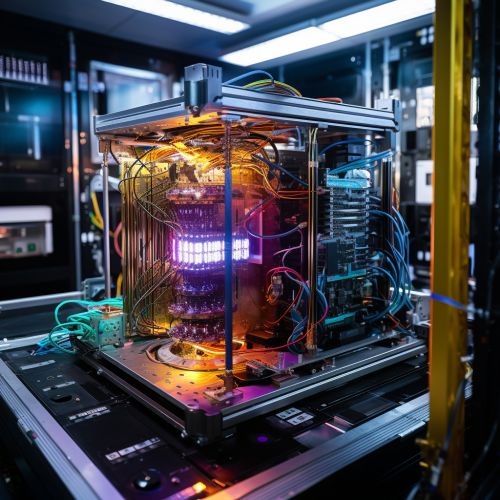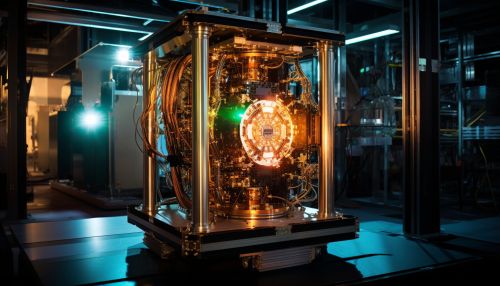Adiabatic Quantum Computing
Overview
Adiabatic quantum computing (AQC) is a form of quantum computing that relies on the adiabatic theorem to do calculations and is one of the many ways to implement quantum computing. The adiabatic theorem, in the context of quantum mechanics, states that a quantum-mechanical system remains in its instantaneous ground state if a given Hamiltonian that depends on time changes slowly enough.
Principles of Adiabatic Quantum Computing
The principles of AQC are rooted in the principles of quantum mechanics, particularly the adiabatic theorem and the concept of quantum superposition. The adiabatic theorem is a key principle in AQC. It states that if a quantum system evolves slowly enough, it will remain in its ground state. This principle is used in AQC to slowly evolve a simple quantum system into a more complex one, ensuring that the system remains in its ground state throughout the process.


Quantum superposition, another fundamental concept in quantum mechanics, is also crucial in AQC. It allows quantum bits, or qubits, to exist in multiple states at once, unlike classical bits that can only be in one state at a time. This property is used in AQC to perform calculations on all possible combinations of qubit states simultaneously.
Adiabatic Quantum Algorithm
The adiabatic quantum algorithm is the set of steps that an AQC follows to solve a problem. The algorithm starts with a simple Hamiltonian, for which the ground state is known. The system is initialized in this ground state. The Hamiltonian is then slowly evolved into a final Hamiltonian, which represents the problem to be solved. The adiabatic theorem ensures that the system remains in its ground state throughout this process. The final state of the system, which is the ground state of the final Hamiltonian, provides the solution to the problem.
Comparison with Gate Model Quantum Computing
AQC is often compared with the more commonly known gate model quantum computing. While both are forms of quantum computing, they differ in their approach to computation. Gate model quantum computing uses quantum gates to perform operations on qubits, while AQC uses the adiabatic theorem to evolve a quantum system from a simple initial state to a final state that represents the solution to a problem. The gate model is more akin to classical computing, as it involves applying a sequence of operations to bits of information. AQC, on the other hand, is a more holistic approach, as it involves evolving the entire quantum system as a whole.
Applications
AQC has potential applications in a variety of fields, including optimization problems, machine learning, and cryptography. In optimization problems, AQC can be used to find the global minimum of a function, which is a common requirement in many scientific and engineering problems. In machine learning, AQC can be used to train algorithms more efficiently. In cryptography, AQC can be used to factor large numbers, a task that is currently difficult for classical computers.
Challenges and Limitations
Despite its potential, AQC faces several challenges and limitations. One of the main challenges is maintaining quantum coherence throughout the computation process. Quantum coherence is the property that allows qubits to exist in a superposition of states, and it is easily disrupted by environmental factors. Another challenge is scaling up the technology. Currently, quantum computers are limited to a small number of qubits, and increasing this number is a significant technical challenge.
Future Prospects
The field of AQC is still in its early stages, and much research is being done to overcome the challenges and explore the potential of this technology. As the understanding of quantum mechanics and the ability to manipulate quantum systems improve, it is expected that the capabilities and applications of AQC will also expand.
